
August 1, 2015: Judy, Kate, Jim and I decided it was time to remove multiflora rose and several species of invasive vines from a large maple on the west side of the lower fence. The leaves of this tree were extremely small, a sign that it was under stress.
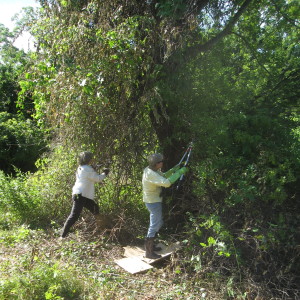
We used every tool in the box for this job: folding limb saws, a large weed wrench, loppers, pruners and even sheets of corrugated cardboard to step on and shield against massive volumes of thorny multiflora rose canes.

Everyone cheered when this large old maple tree was released from the vines and shrubs, which would eventually kill it.
The crabapple and mulberry trees are also under stress from invasive vines…

Along the fence lines and in the lower meadow are crabapple trees planted generations ago. Doug Tallamy, author of Bringing Nature Home, reports these trees host over 300 species of beneficial moths and butterflies, an important food source for birds.
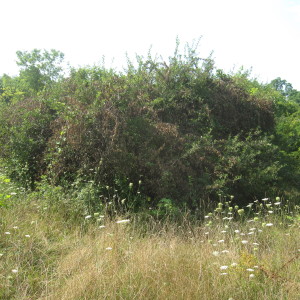
Jim cut and hacked away at the huge vines that had rooted beneath the canopy at the foot of this apple tree. Once the leaves of the dying vines — here turning purple — drop off, the tree will have access to the light it needs to survive.
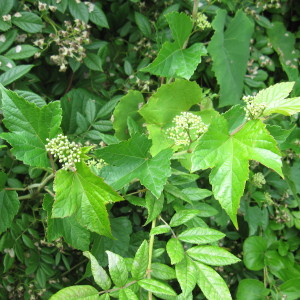
Porcelain berry, which closely resembles our native wild grape, is one of the more invasive tree-killing vines we came across. It is also very difficult to uproot…
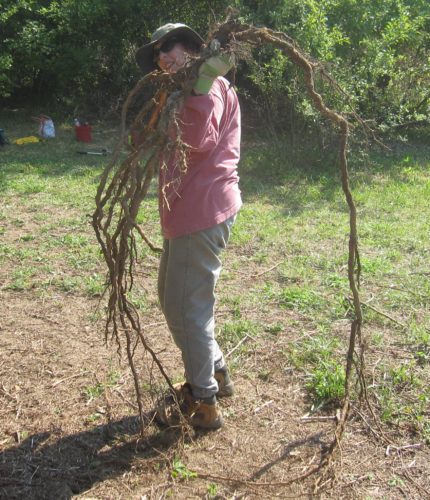
It took five of us using a shovel and pulaski axe to dig up this tenacious porcelain berry root at the lower fence line. Unfortunately, any part of the root or vine left in or on the ground could regrow.
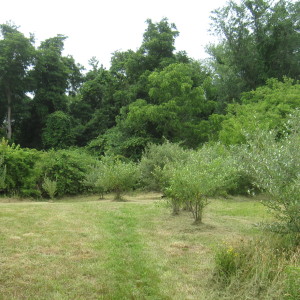
This is an earlier before-picture of the south side of the lower fence showing a row of ubiquitous autumn olive shrubs in the foreground and invasive vines covering both the fence and a large mulberry tree in the center back.

In this after-picture taken during the first two weeks in August… we cut/removed the invasive shrubs, and uprooted most vines in preparation for seeding native grasses and herbaceous wildflowers.
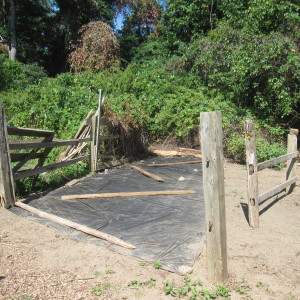
We prepared the ground between the double fence line for a garden by smothering weeds with plastic sheeting. One of the plant species considered was swamp milkweed for attracting Monarch butterflies.
